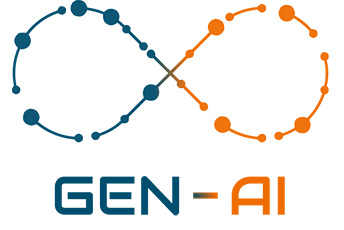Emotion and Intention Detection of Patients During Remote Consultations Using the API REST /virtualbot/sentiment/sentiment_analisys
Market: Clinics, hospitals, telemedicine platforms.
Description:
The API REST /virtualbot/sentiment/sentiment_analisys, which utilizes advanced OCR and a multimodal LLM, enables real-time analysis of patients’ emotions and intentions during remote consultations through telemedicine. This analysis provides healthcare professionals with clear insights into the patient’s emotions, such as anxiety, stress, or satisfaction, helping to detect early signs of mental and emotional health issues. At the same time, intention analysis helps to better understand the patient’s underlying concerns, allowing doctors to offer more personalized and effective care.
The system processes both written text and verbal language expressed during the consultation, allowing for the identification of key emotional signals. By connecting with a multimodal LLM, healthcare professionals can interpret emotional data and adjust their approach based on the patient’s emotional state, improving the quality of care.
Specific Benefits:
- Improvement in Patient Care:
- Detection of Critical Emotions: The system allows for real-time identification of critical emotions such as anxiety, stress, or dissatisfaction, enabling doctors to proactively intervene before emotional problems worsen or affect the patient’s physical health.
- Personalized Care: By detecting the patient’s emotions and intentions, doctors can adjust their recommendations and approaches, offering more personalized and empathetic care.
- Early Detection of Mental Health Issues:
- Detection of Early Signs: Real-time emotion analysis allows doctors to detect early signs of mental health issues such as depression or anxiety, facilitating proactive intervention and referral to specialists if necessary.
- Deeper Understanding of Patient Intentions: Intention analysis helps doctors understand the underlying concerns of the patient that may not have been expressed directly, improving diagnosis and treatment.
- Enhanced Efficiency in Remote Consultations:
- Prioritization of Urgent Consultations: Emotion and intention analysis allows for prioritization of critical consultations, ensuring that patients showing severe anxiety or signs of emotional stress receive immediate care.
- Optimized Consultation Time: By quickly identifying the patient’s emotions and intentions, doctors can tailor the conversation to address the most relevant concerns, reducing the time needed to fully understand the situation.
- Continuous Improvement of Doctor-Patient Relationship:
- Adjustments Based on Emotional State: Doctors can adjust their tone and approach according to the patient’s emotional state, improving trust and the doctor-patient relationship, making the patient feel more heard and understood.
- Proactive and Preventive Care: By understanding the patient’s emotional state and intentions, doctors can provide preventive advice and follow-up recommendations that address both the patient’s physical and emotional health.
- Intervention in Mental Health Issues in Telemedicine:
- Preventive Detection and Treatment: Mental health issues that may arise during remote consultations, such as stress or depression, can be detected and addressed early, allowing for more effective care and preventing major complications.
- Continuous Monitoring of Emotional State: Throughout treatment, the system allows for continuous monitoring of the patient’s emotions, enabling proactive adjustments to therapies or treatments.
- Improvement of Diagnosis and Treatment Quality:
- Comprehensive Diagnosis: By understanding both the patient’s emotional state and underlying concerns, doctors can offer a more comprehensive diagnosis that addresses both the physical and emotional aspects of the patient’s health.
- Adjustment of Treatment Based on Emotional State: As the patient’s emotional state changes, doctors can adjust treatment or recommendations to improve the patient’s emotional well-being and ensure better recovery.
Key System Integrations:
- Telemedicine Platforms:
- Recommended platforms: Teladoc, Amwell, Doxy.me.
- How it works: The system integrates with telemedicine platforms to analyze the patient’s emotions and intentions in real-time, allowing doctors to adjust recommendations and approaches based on the emotional state detected during remote consultations.
- Electronic Health Record (EHR) Systems:
- Recommended platforms: Epic, Cerner, Allscripts.
- How it works: Emotion and intention analysis can be integrated with EHR systems to enrich patient profiles with emotional data, improving health tracking and offering more precise diagnosis.
- Mental Health Monitoring Tools:
- Recommended platforms: Headspace, Woebot, Talkspace.
- How it works: The system can integrate with mental health monitoring tools to provide real-time data on the patient’s emotional state, enabling doctors to offer continuous and personalized follow-up care.
- Healthcare Data Analytics Platforms:
- Recommended platforms: Tableau, Power BI, Qlik.
- How it works: Data obtained on the patient’s emotions and intentions can be integrated into analytics platforms to generate detailed reports that help improve care quality and identify emotional behavior patterns.
Conclusion:
The API REST /virtualbot/sentiment/sentiment_analisys is an essential tool for clinics, hospitals, and telemedicine platforms as it enables the real-time analysis of patients’ emotions and intentions during remote consultations. By improving patient care, identifying mental health issues early, and offering more personalized attention, this system helps healthcare professionals optimize the quality of diagnosis and treatment, strengthen doctor-patient relationships, and improve patient well-being.


